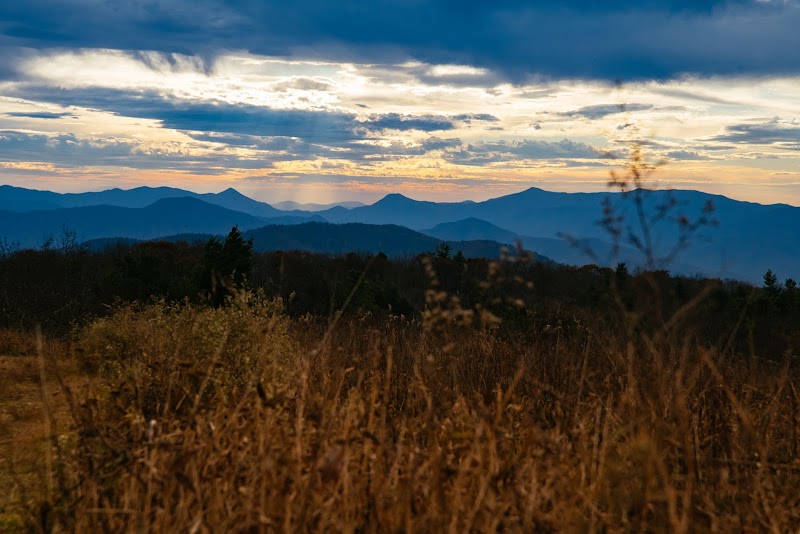Thrilling River Gorge Hikes and Scenic Viewpoints Around Johnson City
Discover some of the most scenic and dynamic river gorge hikes around Johnson City in the Appalachian Mountains. These trails combine rugged terrain with breathtaking views, offering practical routes for all hikers ready to engage with nature’s relentless energy.
Start Early to Avoid Heat and Crowds
Begin your hike in the morning to enjoy cooler temperatures and quieter trails, especially in summer months when midday heat intensifies.
Wear Traction-Oriented Footwear
Choose sturdy hiking boots or shoes with good grip to handle rocky, uneven, and sometimes slippery terrain near riverbanks.
Pack Adequate Water
Carry at least 2 liters of water, more if hiking longer distances or during warmer seasons, as the exertion near the gorges demands proper hydration.
Check Weather Forecasts Before Heading Out
River gorge trails can become hazardous after rain; monitor local weather to avoid slippery conditions and sudden rises in water levels.
Thrilling River Gorge Hikes and Scenic Viewpoints Around Johnson City
The Appalachian Mountains near Johnson City present some of the most engaging river gorge hikes in the region. These trails invite hikers of all levels to engage with landscapes where rivers carve deeply, daring you to move closer and drink in their rugged energy. From forest-cloaked paths to forcing viewpoints poised above rushing water, the gorges here are fiercely themselves—bold, tactile, and raw.
Start with the Buffalo Mountain Trail, an 8.5-mile loop featuring steady elevation gains totaling approximately 1800 feet. Underfoot, the trail shifts between rocky sections and clear dirt tracks, twisting through hardwood forests where sunlight breaks through in patches. The South Fork River below snakes through sheer cliffs, its currents pushing forward with endless resolve. Reaching the overlook at Buffalo Mountain Peak rewards hikers with sweeping views of the river gorge spread wide—rough water and dense tree crowns in quiet opposition.
For a shorter option, the Watauga River Trail offers a 4-mile out-and-back path with a gentler 500-foot rise. The route traces the river closely, weaving alongside mossy boulders and whitewater riffles that speak of persistent motion. Occasional river grottos provide cool respite, and an elevated platform halfway offers a direct gaze into the gorge’s heart where water and rock spar constantly.
East Buffalo Gorge Trail, roughly 6 miles round trip with moderate elevation, blends rugged footing with panoramic vistas. Expect sections of loose rock and exposed roots demanding steady footing and attention. Here, the river dares you to respect its power—it crashes and coils below, shifting moods with every bend. The trail ends with a cliff-side viewpoint that offers close proximity to the gorge’s thunderous pulse.
Practical advice: aim to start early to avoid midday heat and bring at least 2 liters of water, especially in warmer months. Sturdy hiking shoes with good traction are critical for maneuvering slippery rocks and uneven paths. Check weather frequently; rain can turn the gorge trails treacherous quickly, turning swift streams into hazards.
These hikes aren’t just walks—they are negotiations with nature’s endurance and surprises. Expect to hear leaves rustle in the wind’s hurry, water sing in urgent cadence, and skies open wide in sudden bursts of light. Each step moves you through a landscape alive with tension and awe, urging steady respect and clear preparation. Whether you choose a challenging full day or a shorter acclimation, Johnson City’s river gorges promise scenic, practical, and invigorating adventure that sticks with you long after the last trail marker fades behind.
Nearby Trips
All Adventures
Boat Charters
Water Activities
Adventures near Johnson City
Discover the unique and memorable adventures that make Johnson City special.
Frequently Asked Questions
Are the river gorge trails around Johnson City suitable for beginners?
Many trails offer moderate difficulty with manageable elevation changes, making them accessible to fit beginners. However, proper footwear and preparation are essential due to rocky and uneven terrain.
How safe is it to hike near the river edges in the gorge areas?
Caution is needed near river edges as rocks can be slippery and currents strong. Stay on marked trails and avoid getting too close to swiftly moving water to reduce risk.
Is it possible to see wildlife during these hikes?
Yes, these gorges are home to diverse wildlife including white-tailed deer, river otters, and a variety of birds such as kingfishers and herons. Stay observant and keep a respectful distance.
Are dogs allowed on these hiking trails?
Dogs are generally allowed but must be kept on a leash. Make sure to bring water and be mindful of wildlife and other hikers.
Is there cell phone reception along the trails?
Cell phone reception is spotty in certain parts of the gorges due to dense forest and deep valleys. It’s wise to inform someone of your itinerary before heading out.
What is the best way to reach these hiking trails from Johnson City?
Most trailheads are accessible by car from Johnson City within a 30–45 minute drive. Parking is available at main access points but can fill quickly on weekends, so plan accordingly.
Recommended Gear
Hiking Boots with Good Traction
Vital for stability on rocky, slippery surfaces near the gorge.
Hydration System (Water Bottles or Hydration Pack)
Ensures you stay hydrated throughout the hike, especially during warmer months.
Layered Clothing
Allows quick adaptation to changing temperatures and conditions common in river gorge environments.
Insect Repellent
Helps reduce nuisance from mosquitoes and ticks during warmer, wetter months.
Local Insights
Hidden Gems
- "Clifftop ledge overlooks on the less-traveled East Buffalo Gorge Trail"
- "Secluded river grottos along the Watauga River Trail offering quiet rest spots"
Wildlife
- "American dipper birds hunting in fast currents"
- "Nocturnal sightings of river otters and beavers near calm pools"
History
"The region was historically a travel corridor for indigenous peoples and later settlers who relied on river passages for trade and survival. Nearby cultural sites reflect this layered heritage."
